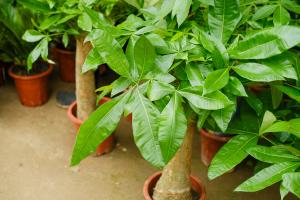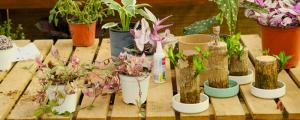What Are Hardy Plants?
When it comes to gardening, finding the right plants that can thrive in your climate and environment is crucial to creating a beautiful and sustainable landscape. This is where hardy plants come in. Hardy plants are able to survive and even thrive in a wide range of temperatures and conditions, making them an ideal choice for gardeners looking for low-maintenance and resilient plants.
Characteristics of Hardy Plants
Hardy plants have several key characteristics that make them uniquely suited for challenging growing conditions. These include:
Toughness: Hardy plants are able to withstand a range of temperatures and conditions, from harsh winter weather to extreme heat.
Drought tolerance: Many hardy plants are adapted to drought-prone environments and can go for long periods of time without water.
Adaptability: Hardy plants are able to adjust to different soil types and light conditions, making them a versatile choice for different environments.
Examples of Hardy Plants
There are many different types of hardy plants that can be used in landscaping and gardening. Here are a few examples:
Succulents: These desert-loving plants are well-suited to hot and dry environments and require minimal watering.
Lavender: This fragrant herb is able to withstand cold and windy conditions, making it a popular choice for gardeners in cooler climates.
Hostas: These shade-loving plants are able to thrive in areas with less sunlight, making them a good option for landscaped areas under trees or other structures that may block sunlight.
Coneflowers: These colorful, daisy-like flowers are able to withstand both drought and heat, making them a popular choice for summer gardens.
Care and Maintenance of Hardy Plants
While hardy plants are generally low-maintenance, they still require a certain amount of care and attention to ensure they stay healthy and vibrant. Here are a few tips:
Choose the right plant for the environment: Make sure the plant you select is well-suited to the climate, soil type, and sunlight conditions in your garden or landscape.
Provide adequate water: While many hardy plants can go long periods without water, it鈥檚 still important to provide them with enough hydration to keep them healthy and thriving.
Fertilize and prune regularly: Some hardy plants may benefit from regular fertilization, and pruning can help keep them looking neat and tidy.
Protect from pests and disease: Keep an eye out for common garden pests and take steps to prevent disease by ensuring good airflow around the plants and avoiding overwatering.
In Conclusion
Hardy plants are an excellent choice for gardeners looking for low-maintenance and resilient plants that can survive and thrive in a wide range of temperatures and conditions. By taking the time to choose the right plants for your environment and providing them with the care they need, you can create a beautiful and sustainable landscape that will last for years to come.

 how many times do yo...
how many times do yo... how many planted tre...
how many planted tre... how many pine trees ...
how many pine trees ... how many pecan trees...
how many pecan trees... how many plants comp...
how many plants comp... how many plants can ...
how many plants can ... how many plants and ...
how many plants and ... how many pepper plan...
how many pepper plan...
































